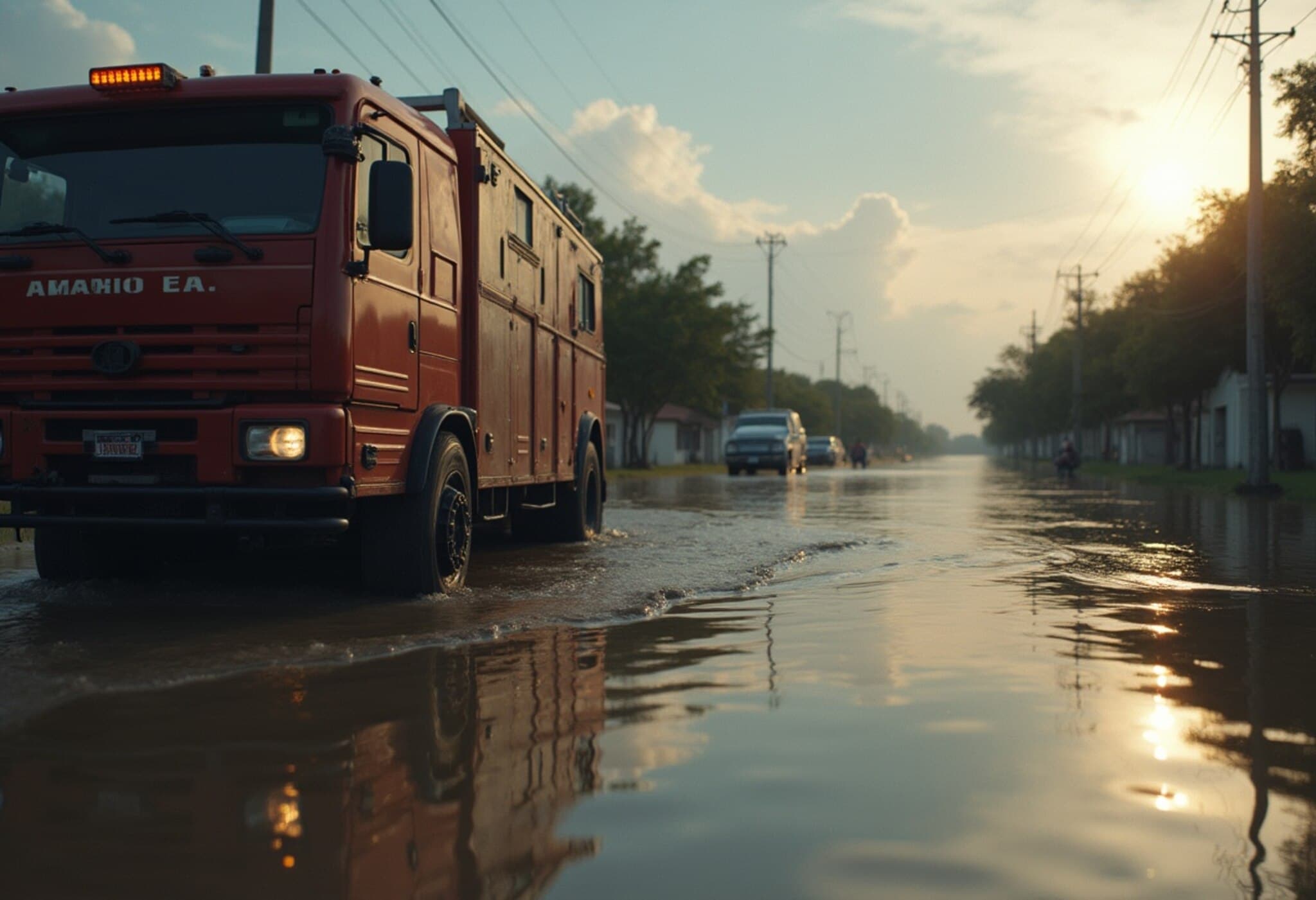Trump Tours Devastated Texas Region After Catastrophic Flooding
On July 11, 2025, President Donald Trump arrived in Texas to personally assess the aftermath of devastating flash floods that claimed the lives of over 120 people. The flooding, which struck in the early hours of July 4th, swept through the Texas Hill Country, most tragically impacting communities along the Guadalupe River, including the town of Kerrville.
The Deadliest Disaster So Far in Trump’s Term
The unprecedented flash flooding represents the gravest natural calamity of President Trump’s near six-month administration. Torrential rains caused the Guadalupe River to surge from around one foot to a staggering 34 feet in mere hours, obliterating homes, campsites, and infrastructure in its path.
Among the fatalities were at least 36 children, many of whom perished at Camp Mystic, a historic girls' Christian summer camp. The floodwaters’ rapid rise left many with little opportunity to escape. Rescue teams continue to sift through debris in hopes of locating the more than 160 individuals still officially missing, though experts caution that missing-person counts often fluctuate in the chaotic aftermath of such disasters.
Government Response Under Intense Scrutiny
The timing of the tragedy, coinciding with President Trump’s signature legislative bill aimed at reducing taxes and federal spending, has sparked critical conversations around disaster preparedness and response funding. Locals have voiced frustration, blaming recent budget cuts for hampering emergency services. For instance, a Kerrville gas station bore graffiti indicting the new legislation for slashing emergency funding.
Before the floods, Kerr County had declined to install early flood-warning systems after failing to secure necessary state funds—a decision now at the heart of debates over prevention and readiness. In interviews, President Trump acknowledged support for installing such alarms going forward, signaling potential shifts in policy thinking.
Federal Agencies and Weather Services Face Questions
Senate Democratic leader Chuck Schumer has formally requested an investigation into whether staffing cuts at the National Weather Service (NWS) compromised the agency’s ability to forecast and warn residents effectively. While the NWS defended its actions—highlighting the deployment of extra meteorologists during the holiday—the Trump administration attributed the unprecedented scale of flooding to an "act of God," emphasizing the event’s rarity.
Community Voices: Resilience Amid Controversy
Local residents, such as Jon Moreno, a 71-year-old Kerrville resident, have expressed a mix of resignation and support for the official response efforts. Moreno remarked on the inherent risks of living close to the flood-prone riverbanks and suggested that while enhanced warning systems could help, building in such vulnerable zones remains a primary concern.
The Road Ahead: Investigations and Policy Reforms
The Texas state legislature is preparing for a special session later this month intended to investigate the floods in detail and allocate additional relief funds. At the federal level, debates swirl around the future of the Federal Emergency Management Agency (FEMA), whose coordination role in disaster response has come under question by the White House, with President Trump deferring public comments on its status.
Experts emphasize that the catastrophe underscores the urgent need for comprehensive investment in early warning infrastructure, improved emergency communication, and sustainable land-use policies to mitigate risks in flood-prone American regions.
Expert Insight: Balancing Preparedness and Climate Realities
From a policy perspective, this disaster exemplifies the challenges America faces amid increasingly volatile climate conditions. "Flooding in 'Flash Flood Alley' is a recurring threat that demands proactive federal-state collaboration," says Dr. Emily Carter, a climate and emergency management analyst. "Cutting funding for emergency systems may save money short-term but risks human life and long-term economic stability." This sentiment resonates beyond Texas, prompting a national conversation about resilience as extreme weather events become more frequent.
Summary: What This Flood Means for America's Disaster Future
- Over 120 fatalities and dozens missing after flash floods hit Kerrville, Texas.
- Early warning system funding cuts under scrutiny amid disaster preparedness debates.
- Federal and state officials brace for investigations and legislative action.
- Communities grapple with rebuilding while questioning land-use and safety policies.
- National implications for FEMA’s role and disaster management funding follow.
Editor's Note
This tragic flood reveals how complex and intertwined issues of emergency preparedness, climate change adaptation, and government budgeting are in safeguarding communities. As investigators and lawmakers mobilize, the damage in Texas serves as a somber reminder: natural disasters don’t just highlight vulnerabilities—they demand a reevaluation of priorities to protect lives in an era of mounting environmental risks. For readers, the crucial question remains: will policy catch up to the reality on the ground before the next catastrophe strikes?



















